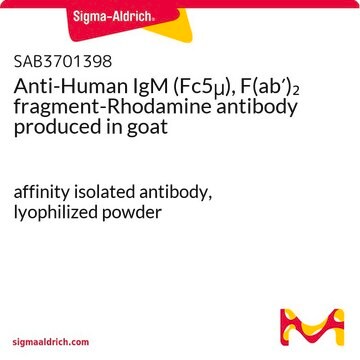C4187
Cyanoborohydride Coupling Buffer
Synonyme(s) :
Coupling buffer
Sélectionner une taille de conditionnement
523,00 €
Sélectionner une taille de conditionnement
About This Item
523,00 €
Produits recommandés
Forme
liquid
Niveau de qualité
Pertinence de la réaction
reagent type: reductant
Technique(s)
affinity chromatography: suitable
Application(s)
life science and biopharma
Température de stockage
2-8°C
Application
- in coupling reactions between amines and glutaraldehyde[1]
- to reduce hydrazone bond to a stable hydrazide bond[2]
- as a component in oligonucleotide reaction mixture for coverslips functionalization[3]
Actions biochimiques/physiologiques
Composants
Mention d'avertissement
Warning
Mentions de danger
Conseils de prudence
Classification des risques
Acute Tox. 4 Oral - Aquatic Chronic 2
Code de la classe de stockage
12 - Non Combustible Liquids
Classe de danger pour l'eau (WGK)
WGK 3
Point d'éclair (°F)
Not applicable
Point d'éclair (°C)
Not applicable
Faites votre choix parmi les versions les plus récentes :
Certificats d'analyse (COA)
Vous ne trouvez pas la bonne version ?
Si vous avez besoin d'une version particulière, vous pouvez rechercher un certificat spécifique par le numéro de lot.
Déjà en possession de ce produit ?
Retrouvez la documentation relative aux produits que vous avez récemment achetés dans la Bibliothèque de documents.
Active Filters
Notre équipe de scientifiques dispose d'une expérience dans tous les secteurs de la recherche, notamment en sciences de la vie, science des matériaux, synthèse chimique, chromatographie, analyse et dans de nombreux autres domaines..
Contacter notre Service technique








